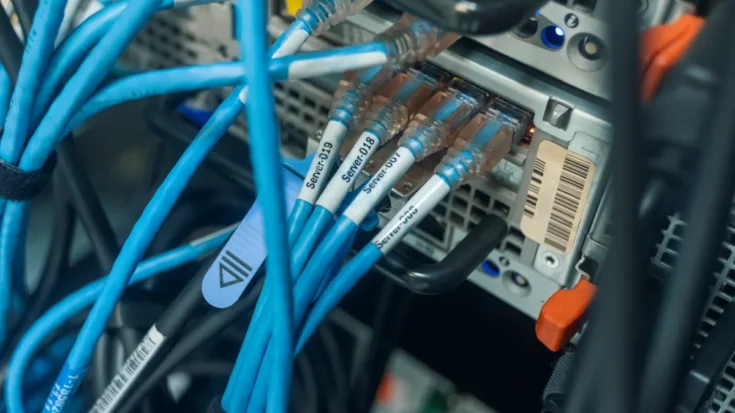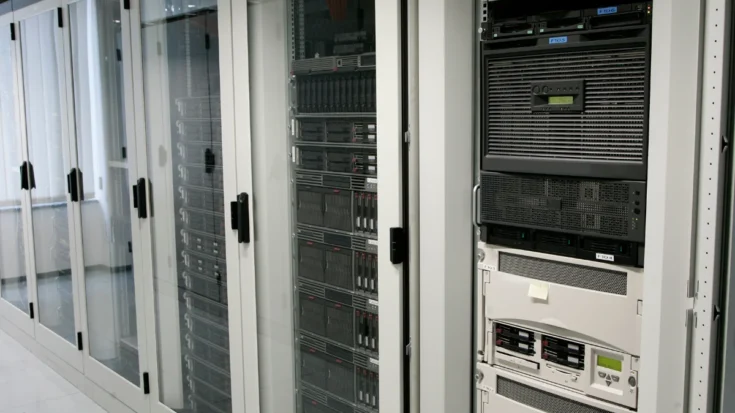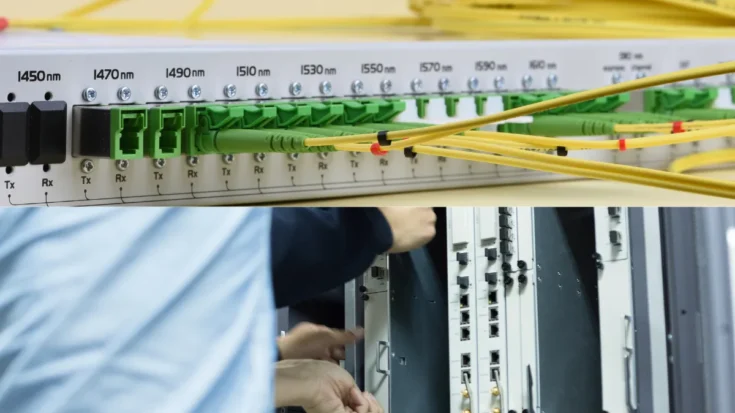Dense Wavelength Division Multiplexing (DWDM) and Coarse Wavelength Division Multiplexing (CWDM) in the field of optical networking are key technologies for maximizing the capacity of fiber optic infrastructure. Although both maximize the capacity of fiber optic infrastructure, DWDM vs CWDM have some significant differences.
The differences between DWDM vs CWDM cover several aspects such as wavelength spacing, number of channels, and application scenarios.
This article will delve into the important differences between DWDM vs CWDM to provide a clear understanding of when to utilize each technology.
Also Read
Table of Contents
What is DWDM?

Dense Wavelength Division Multiplexing (DWDM) is a technology that allows the combining of many light signals with different wavelengths through a single optical fiber.
In other words, DWDM allows high capacity data transmission through one optical fiber, without the need to add new optical fibers. With DWDM, it is possible to transmit data traffic between continents through repeaters with lower light attenuation.
What is CWDM?

CWDM is a technology that allows the transmission of multiple data signals simultaneously through a single optical fiber. This is achieved by using different wavelengths of light and making it part of the Wavelength Division Multiplexing (WDM) technique. CWDM is a variation of WDM that uses a wider wavelength range that is suitable for short-distance transmission.
The Differences of DWDM vs CWDM

CWDM (Coarse Wavelength Division Multiplexing) and DWDM (Dense Wavelength Division Multiplexing) are WDM technologies that allow the transmission of many optical signals over the same optical fiber. The difference lies in the wavelength spacing used, with CWDM having a wider spacing and DWDM narrower spacing. Here are some of the key differences between DWDM vs CWDM:
1. Wavelength spacing
DWDM: Uses narrower spacing, such as 0.8nm or 0.4nm.
CWDM: Uses a 20nm wavelength spacing.
2. Number of channels
DWDM: Can accommodate more channels (up to 160).
CWDM: Can accommodate more channels (up to 18) due to its narrower wavelength spacing.
3. Transmission distance
DWDM: More suitable for long-distance transmission as it can use an amplifier (EDFA) to boost the signal.
CWDM: More suitable for short to medium distance networks.
4. Cost
DWDM: Generally more expensive because the components are more complicated than CWDM.
CWDM: Generally cheaper because the components are simpler than DWDM.
5. Application scenario
DWDM: Used for backbone and core networks.
CWDM: Often used in metro networks, access, and enterprise networks.
That’s the difference between DWDM vs CWDM that you need to know. If you need long-distance transmission and high capacity, DWDM is a better choice. If the need emphasizes more on cost and short distance, CWDM is more suitable.

















